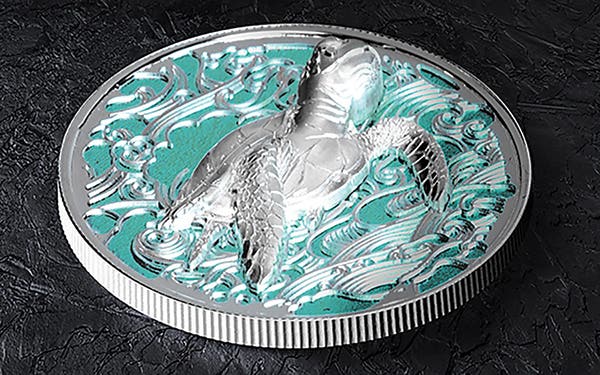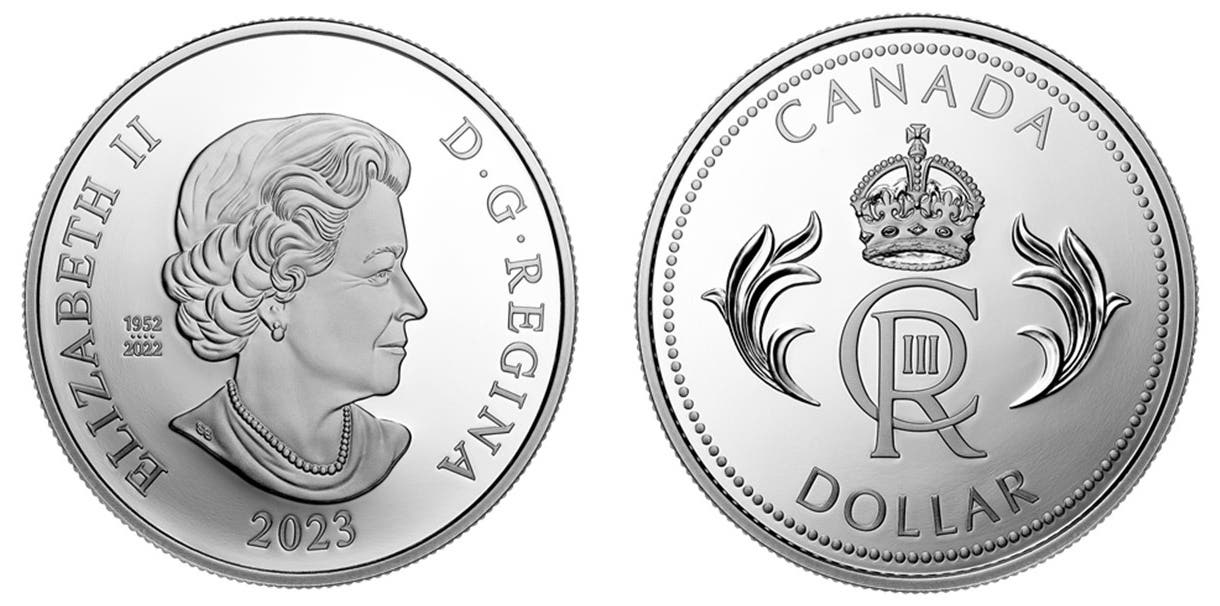Canadian coins celebrate 150 years
Editor’s Note: All images courtesy RCM. Since Jan. 1, Canada’s 150th birthday celebrations have been in full swing. No more so is this apparent than at the Royal Canadian Mint….
Editor's Note: All images courtesy RCM.
Since Jan. 1, Canada’s 150th birthday celebrations have been in full swing. No more so is this apparent than at the Royal Canadian Mint. During the course of this year, the Mint plans to release over 40 different products to mark the 150 years that have elapsed since four provinces of British North America confederated to form the Dominion of Canada in 1867.
Several new celebratory issues were launched in late 2016. The first consisted of a 30 mm, 31.6 g .9999 fine gold $200 proof “150 Years of Passion.” The reverse reproduces the maple wreath design used on Canada’s first coins.
Then in December came the selectively gold-plated, frosted .9999 fine silver proof set, “Canada 150: Our Home and Native Land.” This contained new 5 cents to $2 circulation coins along with a 50 cents bearing the official maple leaf “CANADA 150” mosaic logo used to symbolize the present confederation.
Included in the same set was a commemorative 36.07 mm, 23.17 g silver dollar proof whose reverse design by Jamie Desrochers shows a large “150” backgrounded by a map of Canada and the country’s flag. This dollar has been produced in several versions throughout the year. These include selective gold plating and red enameling.
Last November saw the first releases of a sesquicentenary subscription series. The 13 coins involved represent each of the 10 provinces and 3 territories that make up Canada 2017. Each reverse image is inspired by a photograph from a magazine and is reproduced in color. Each coin is a 34 mm, 15.87 (1/2oz) .9999 fine silver, colorized $10 matte proof with a mintage of 25,000.
First coin in the series showed Canada’s favorite bird: the Common Loon. It was followed by Kayaking on the River in December, the Lighthouse at Peggy’s Cove in January, a Great Blue Heron in February and a Canola Field in March.
Later issues include Float Planes on the Mackenzie River, Grizzly Bear, Panmure Island, Aurora Borealis at McIntyre Creek, Wild Swift Fox and Pups, Peyto Lake, Iceberg at Dawn and Drum Dancing.
A proof silver $10 surfaced in early January. The reverse of the 34 mm, 15.87 g .9999 fine silver specimen is a direct take on George Kruger-Gray’s iconic Canadian cent showing a twig with two leaves. (Those two leaves are officially described as maple but arborists insist that as they alternate along the twig they are those of a sycamore plane. However, let’s not rain on Canada’s parade.)
One of the more spectacular issues from a numismatic point of view was a 102.1 mm, 1,000 g .9999 fine silver ultra-high relief $250. The reverse displays a scattered pile of circulation coins used in Canada for the last 150 years. Each coin is reproduced true-to-size. Each obverse and reverse is shown in original detail with all the effigies of Canada’s assorted monarchs since confederation present and correct. To accommodate all 35 coins has required 4.4 mm of relief compared with the standard 1.2 mm of a conventional 1 kilo silver coin. Mintage is 500.
Numerous glow-in-the-dark coins figure among the “150” commemoratives. Mid-year saw a 27 mm, 7.96 g .9999 fine silver “Proudly Canadian” $5. It featured the Canadian maple leaf flag in full color flying against a firework-lit background. It is those fireworks that do the glowing.
The coin comes with a sterling silver pendant necklace-making kit. The mintage is amusingly given as, “while supplies last."
Several large silver coins show historic themes. A 76.25 mm, 311.54 g (10 oz) .9999 fine silver $100 proof harks back to the actual confederation in 1867. The double-effigy obverse portrays both Queen Victoria and Queen Elizabeth II, the two Canadian monarchs in 1867 and 2017, respectively.
The reverse design is taken from the 1867 Confederation medal by Royal Mint engravers J.S. and A.B. Wyon. Britannia, representing Great Britain, is seated, clad in full armor and accompanied by her faithful lion. She is presenting young avatars of the four Canadian provinces with the British North American Act. The legend reads JUVENTAS ET PATRIUS VIGOR [Youth and patriotic strength].
A second 10 oz silver proof recalls the Confederation’s Diamond Jubilee in 1927. It has the same obverse as above. The reverse features an update by Charles William Jefferys of the original Raymond Delamarre design for the Diamond Jubilee of the Confederation of Canada medal. Allegorical Canada stands with arms spread wide among sheaves of wheat and clusters of maple leaves. Behind her a map of the Dominion of Canada is marked by transcontinental railroad links along with the shield from Royal Arms of Canada as of 1927. The Canadian motto A MARI USQUE AD MARE reads “From sea to sea.”
Also from 1927 comes a three-coin set showing unused coin designs. A cent features an Art Nouveau bough of maple leaves, a 5 cent shows a crowned lion gripping a maple leaf, and a 25 cents displays the Peace Tower on Parliament Hill.
For those who may not be fully up to speed with matters north of the 49th parallel, the four British colonies that united to form the Dominion of Canada on July 1, 1867, were Ontario, Quebec, Nova Scotia and New Brunswick. Ontario and Quebec came into being at the same time by way of division of the former United Province of Canada.
Over the next 132 years nine other territorial units joined the federation: Manitoba and Northwest Territories in 1870, British Columbia in 1871, Prince Edward Island in 1873, Yukon Territory (Yukon) in 1898, Saskatchewan in 1905, Newfoundland (=Newfoundland+Labrador) in 1949 and Nunavut in 1999.
For full details of the above and future coin issues keep a weather eye on the RCM website: www.mint.ca.
This article was originally printed in World Coin News. >> Subscribe today.
More Collecting Resources
• Liked this article? Read more by subscribing to Numismatic News.
• Check out the newly-updated Standard Catalog of World Coins, 2001-Date that provides accurate identification, listing and pricing information for the latest coin releases.








